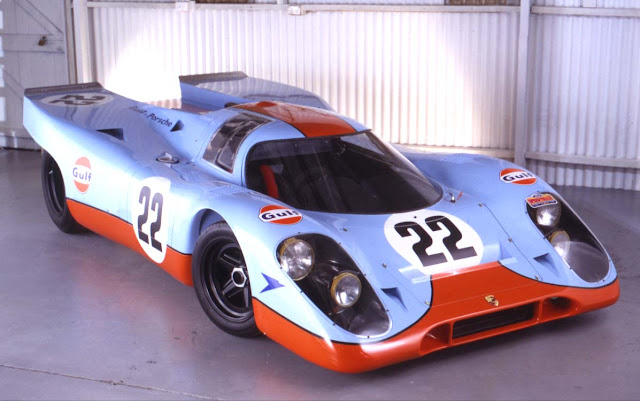![[x]](http://files.porsche.com/filestore.aspx/zoom.jpg?pool=multimedia&type=image&id=2011-01-10-5&lang=none&filetype=zoom&version=1)
But I have a confession. I know just as much about the new 918 RSR as you do. No more, no less.
Yes, Porsche ran the 911 GT3 R hybrid in the 24 hours of Nurburgring to field test its flywheel generator. Yes, Porsche considered it to be successful. Yes, they carried it over to a very sexy 918 Spyder hybrid supercar concept, which brought journalists to their knees at the last Geneva Auto Show. Yes, Porsche did it again with the 918 RSR, this time it's at Detroit's NAIAS.
I'll run through the specs, but only because I feel that there's always somebody who has to ask, "Well, how fast does it go?" Well are we ready? You better be because this is straight from Porsche AG's website itself:
The V8 engine is a further development of the direct injection engine from the successful RS Spyder* race car and now offers an output of precisely 563 hp at 10,300/rpm in the 918 RSR. The electric motors on the two front wheels each contribute 75 kW, i.e. a total of 150 kW, to the peak drive power of exactly 767 hp. This additional power, which is generated during braking, is stored in an optimised flywheel accumulator.*now we know they're serious... especially since they used the word "precisely."
But the numbers aren't the reason why I'm writing. No. I won't pretend like I understand even half the technology that Porsche put into the 918 RSR to achieve its figures. Moreover, I think we can better put the numbers into context if we got back to it after the RSR has raced a couple events rather than when it's only spinning on a pedestal, polished in a coat of wax...
A bit of what you just saw in the video made me understand something. When I look back into history, I don't believe Porsche was ever successful on first attempt. Take the 911; from day 1, Porsche has been criticized by many (ahem, Mr. Chin) for misplacing the engine behind the rear axle. Yet somehow, their decades of stubborn trial and error eventually brought us the masterpiece that it is today. The result? Now Porsche practically owns the copyright to the RR engine layout.
Now in this particular video, emphasis has been placed on another Porsche legend, the 917 race car. Porsche AG design chief, Mr. Michael Mauer says two things that captured my attention. First, "When we look back into the history, definitely the 917 plays one of the major roles." Second, "I always wanted to express as well that the 918 is not really the successor of the 917. This car was supposed to be a symbol for the company and that we are still able to build the best sports cars and racing cars."
Now if you're a fan of Porsche, you'll know that the 917K had won both the 1970 and the 1971 24 Hours of Le Mans. But sometimes you have to figure out what they AREN'T saying. While the 917 was put through its paces during development in 1969, test drivers said the car was incredibly unstable. Porsche responded by trying many ideas to curb the issue; modifying the frame, suspension, and aerodynamics but all to no avail. Because of this, privateers still preferred the predecessing 908 over the 917. Moreover, the first privateer driver to race a 917, John Woolfe, crashed his Porsche 917 on the first lap of Circuit de la Sarthe, at Maison Blanche, tragically ending his life.
One could say the rest is history. Porsche stuck to their guns, stubbornly unwilling to give up on the car, fully believing its potential. Their capstone achievement is of course their overall win of 1971. Martini Racing team's Helmut Marko and Gijs van Lennep ran the #22 917 to a record setting distance of 5,335.313 km. This record has not been broken until just last year, when Audi's R15 TDIs beat the record by 13.629 km. Obviously, Porsche will make sure that you never forget that. Even after Le Mans, the 917's success continued. Porsche transitioned its participation to North America and raced in the Can-Am series from 1972-1973. In this period of participation, the 917 reached its final iteration, the 917/30. This beast flexed 1,580 bhp in qualifying tune, dominating the 1973 season of the Can-Am series. That said, the Porsche 917 is one of the few race cars that dominated multiple series events.
It will seem somewhat weird to explain it this way, but maybe Porsche thrives on doing things the hard way. And maybe they don't win by being clever, or even by being practical, but win by simply never giving up.
We note that the 911 GT3 R Hybrid was the only hybrid racing car out of the 200 vehicles on the grid. It raced hard, led for 11 hours of the 24 Hours of Nurburgring before it broke down only 2 hours from the finish. Although the result was a DNF, and should've been considered a failure, the telemetrics were enough to convince the team that a hybrid system is definitely the future for Porsche Racing.
Porsche has shown us that they will be just as stubborn in their latest racing endeavor, and I can't wait to see the 918 RSR make some hybrid history in motorsports.
.
You didn't think I was just going to end the post without some car porn, did you?
![[x]](http://files.porsche.com/filestore.aspx/zoom.jpg?pool=multimedia&type=image&id=2011-01-10-10&lang=none&filetype=zoom&version=1)
![[x]](http://files.porsche.com/filestore.aspx/zoom.jpg?pool=multimedia&type=image&id=2011-01-10-4&lang=none&filetype=zoom&version=1)
![[x]](http://files.porsche.com/filestore.aspx/zoom.jpg?pool=multimedia&type=image&id=2011-01-10-6&lang=none&filetype=zoom&version=1)
![[x]](http://files.porsche.com/filestore.aspx/zoom.jpg?pool=multimedia&type=image&id=2011-01-10-8&lang=none&filetype=zoom&version=1)
![[x]](http://files.porsche.com/filestore.aspx/zoom.jpg?pool=multimedia&type=image&id=2011-01-10-9&lang=none&filetype=zoom&version=1) |
| www.porsche.com/usa |
 |
| Porsche 917/30 |
 |
| Martini Racing Porsche 917, winner of 1971 Le Man |
 |
| Porsche 917 K |
 |
| Gulf Livery 917 of Steve McQueen fame. Note the paint and # similarities to the current 918 concept |
![[x]](http://files.porsche.com/filestore.aspx/zoom.jpg?pool=multimedia&type=image&id=2011-01-10-3&lang=none&filetype=zoom&version=1)
![[x]](http://files.porsche.com/filestore.aspx/zoom.jpg?pool=multimedia&type=image&id=2011-01-10-1&lang=none&filetype=zoom&version=1)
No comments:
Post a Comment